Access to EMTP user presentations, webinars, and slide deck presentations.
36 presentations for grid:
Author(s): Ulas Karaagac
Type:Technical Presentation
Date: 2020-12-14
Abstract
<p>This presentation managed by Ulas Karaagac from the Hong Kong Polytechnic University, show us a Generic EMT-type Model for Wind Parks with Permanent Magnet Synchronous Generator type ... see moreFull Size Converter Wind Turbines. Some presentation of the User Conference are available: https://www.emtp-software.com/support... Abstract : Utilities are under considerable pressure to increase the share of wind energy resources in their generation fleet. With the increasing share of wind energy resources, the dynamic behavior of power systems will change considerably due to fundamental differences in technologies used for wind and conventional generators. There is very little standardization in the ways to model wind turbines (WTs) and wind parks (WPs) in sharp contrast to conventional power plants. Hence, there is an international interest to deliver generic models (i.e. standardized and publicly available) for WTs and WPs that are able to capture all performance aspects as good as manufacturer-specific models. This research developed an electromagnetic transient (EMT) simulation model for full size converter (FSC) WT based WPs that can be used for stability analysis and interconnection studies. The considered topology uses permanent magnet synchronous generator. Although the collector grid and the FSC WTs are represented with their aggregated models, the overall control structure of the WP is preserved. FSC WT and WP control systems include the non-linearities, and necessary transient and protection functions to simulate the accurate transient behavior of WPs.</p>
Author(s):
Type:Technical Presentation
Date: 2020-12-14
Abstract
<p>This presentation targets CIM CGMES standard solution to data portability in relation to an EMT-type application. CIM is a format that attempts to be accessible and understandable to ... see moreall. The grid import tool allows to import static data from planning tools into EMTP that is the first step for frequency scan studies and time-domain simulations. Exchanging CIM dynamic data is in progress, some standard control systems have already been successfully imported. Abstract: The need of automation for the exchange of power system information between simulation tools is an increasing one. There are several methods for creating modeling portability between applications. Using a standard facilitates interoperable exchanges of power system network data between and within organizations and is substantial to become a durable portable method. This presentation targets CIM CGMES standard solution to data portability in relation to an EMT-type application. CIM is a format that attempts to be accessible and understandable to all. The grid import tool allows to import static data from planning tools into EMTP that is the first step for frequency scan studies and time-domain simulations. Exchanging CIM dynamic data is in progress, some standard control systems have already been successfully imported.</p>
Author(s): Sebastien DENNETIERE
Type:Technical Presentation
Date: 2020-12-11
Abstract
<p>This presentation presents the modeling and analysis of large DC grids with EMTP - new CIGRE benchmark with mixed VSC / LCC technologies </p>
<p>Overv... see moreiew: - DC Grid modeling activities in CIGRE WG - Description of the new CIGRE DC Grid benchmark - Implementation of the DC Grid model in EMTP</p>
Author(s): Aramis Schwanka Trevisan, Enercon
Type:Technical Presentation
Date: 2020-12-11
Abstract
<p>This presentation provides an overview of recently proposed generic EMTP wind turbine models, which have been validated against field measurements, and a benchmark study system for th... see moree assessment of low-frequency interactions involving wind farms in radial series-compensated grids. Based on these models, detailed EMTP results are presented and modal analysis is applied to help explaining some of the identified issues and provide mitigation. Finally, a recently proposed Abstract : Recently, field events involving adverse interaction between grid-connected inverters and the existing power infrastructure have been reported. Hence, the ever increasing integration of such devices is yielding the need for detailed EMT-Type models to better understand such phenomena, as well as reliable screening methodologies for the efficient identification of potentially critical scenarios during new interconnection processes. This work provides an overview of recently proposed generic EMTP wind turbine models, which have been validated against field measurements, and a benchmark study system for the assessment of low-frequency interactions (sub-synchronous control interaction) involving wind farms in radial series-compensated grids. Based on these models, detailed EMTP results are presented and modal analysis is applied to help explaining some of the identified issues and provide mitigation. Finally, a recently proposed methodology aiming at the efficient identification of critical scenarios, namely, the DQ-Scanning technique, is outlined and its effectiveness demonstrated by its application to the aforementioned systems. Author: Aramis Schwanka Trevisan</p>
Author(s): Ulas Karaagac
Type:Technical Presentation
Date: 2020-12-11
Abstract
<p>This presentation presents a research on static synchronous compensator (STATCOM) integration into a doubly-fed induction generator (DFIG) based wind park (WP) in order to fulfill the... see more grid code requirement for power factor control. The STATCOM impact on the WP high voltage ride-through (HVRT) capability is also analysed.</p><p>The WP HVRT capability is assessed by analyzing the responses to a parametric voltage waveform. The external system is represented by a Thevenin equivalent. The pre-described voltage waveforms are applied to the Thevenin source in order to assess the conformity of the HVRT capability to Hydro-Quebec specifications. An actual WP is considered where the simulation model includes all details regarding collector grid and overvoltage protection. The simulations consider various wind turbine (WT) and medium voltage (MV) feeder outage scenarios as well as STATCOM usage for reactive power compensation. A transient function is also proposed for the STATCOM to improve the WP HVRT capability. The simulation results demonstrate that, STATCOM usage provides a noticeable improvement in HVRT capability of the WP, especially with the proposed transient function.</p>
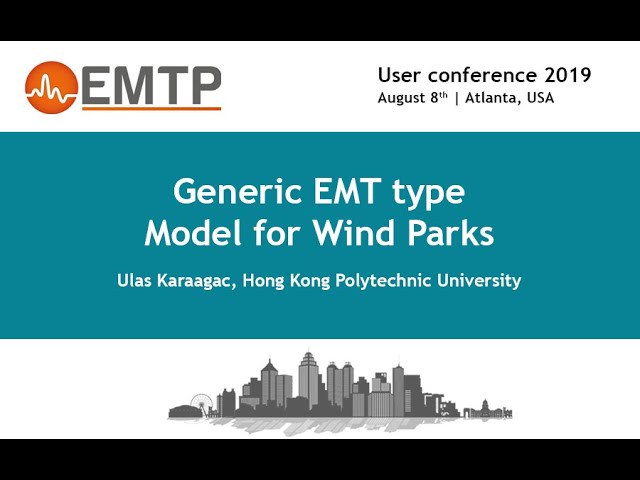
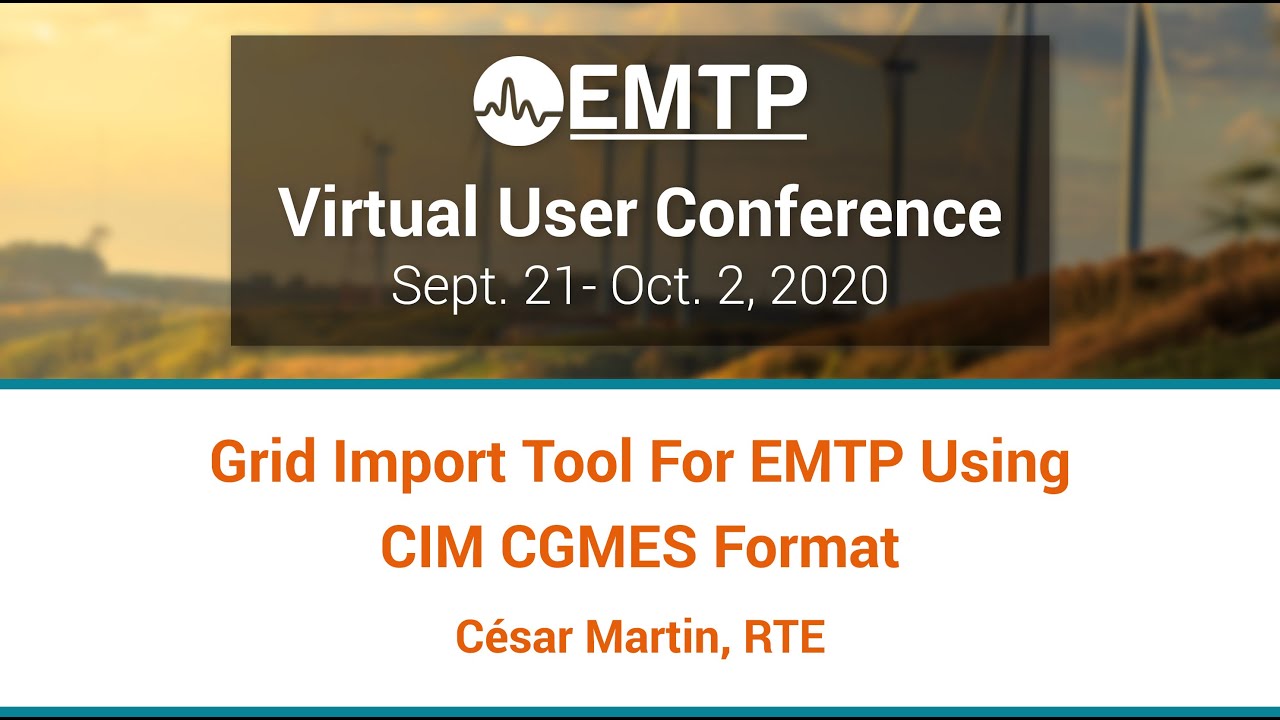
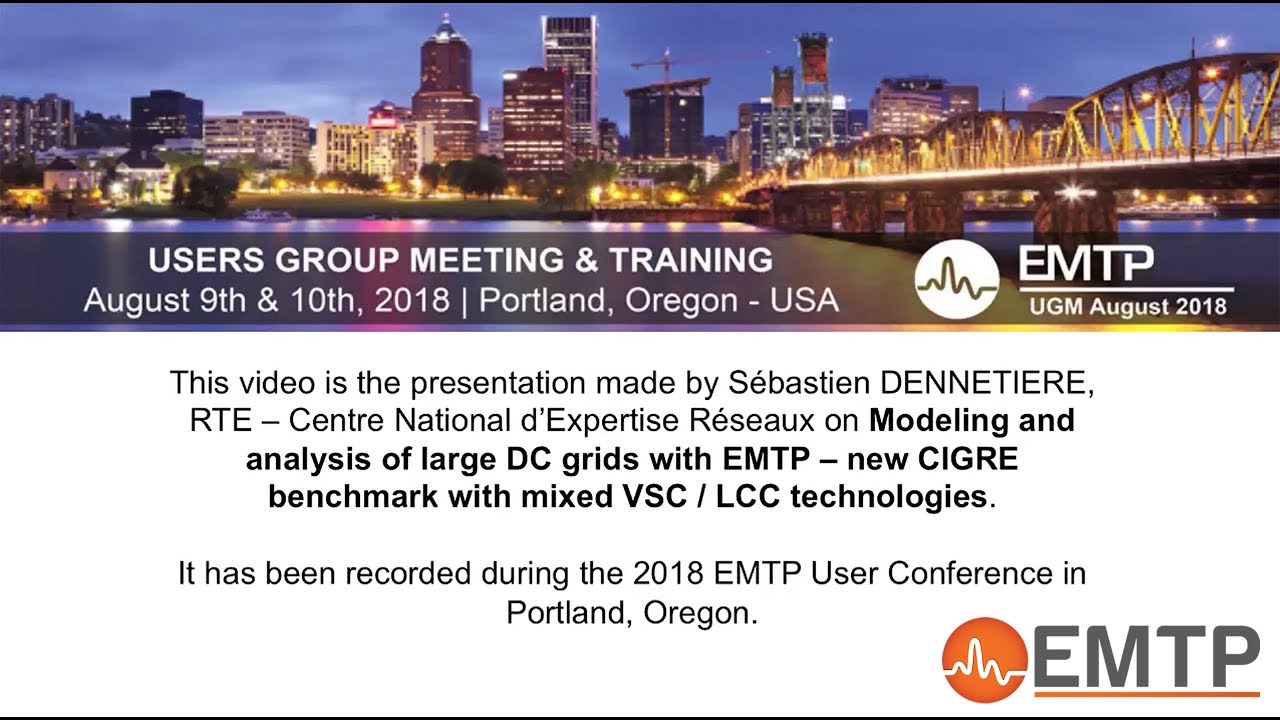
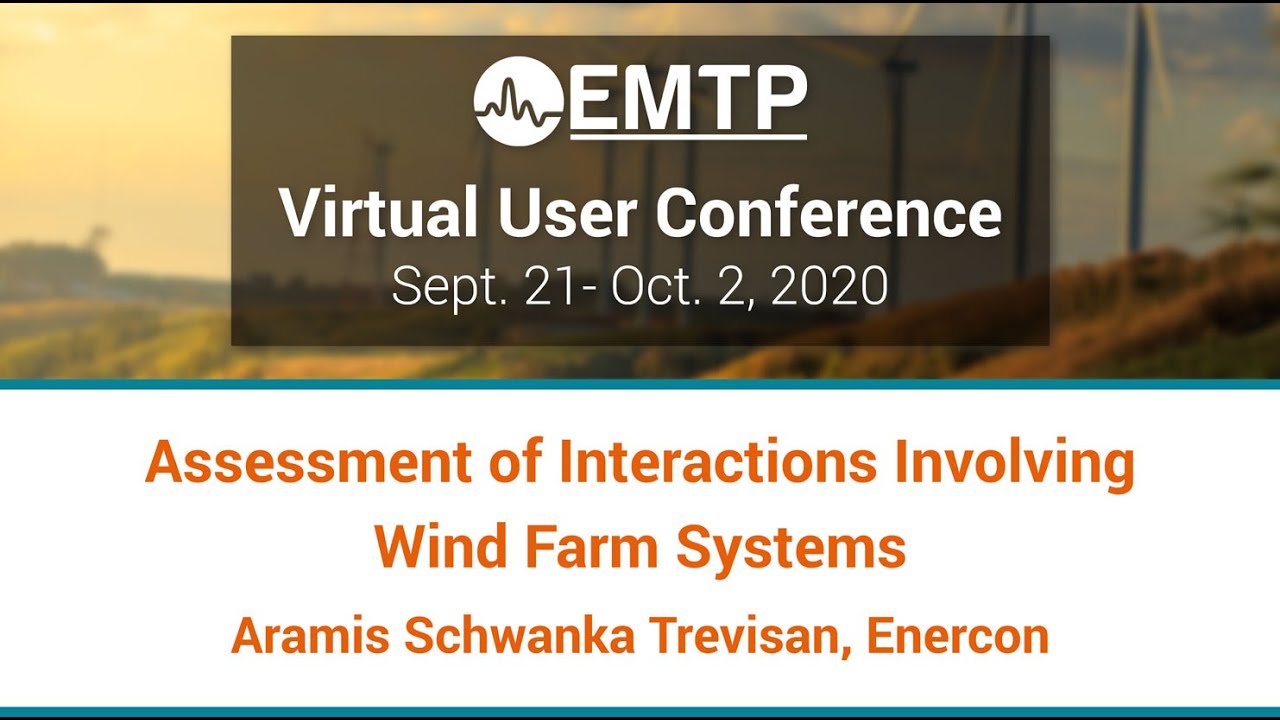
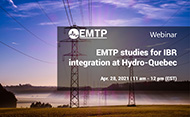
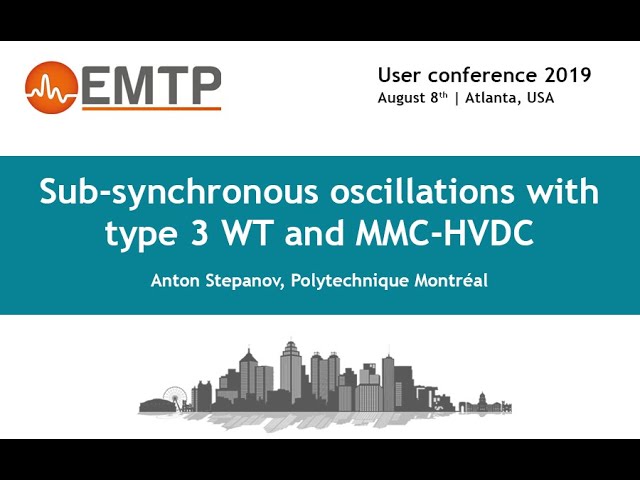
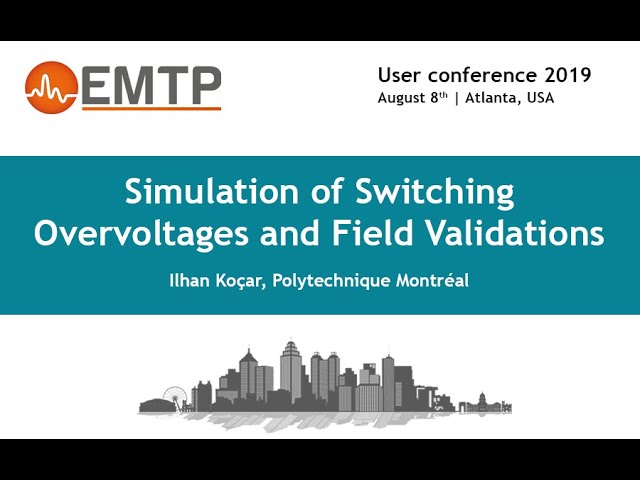
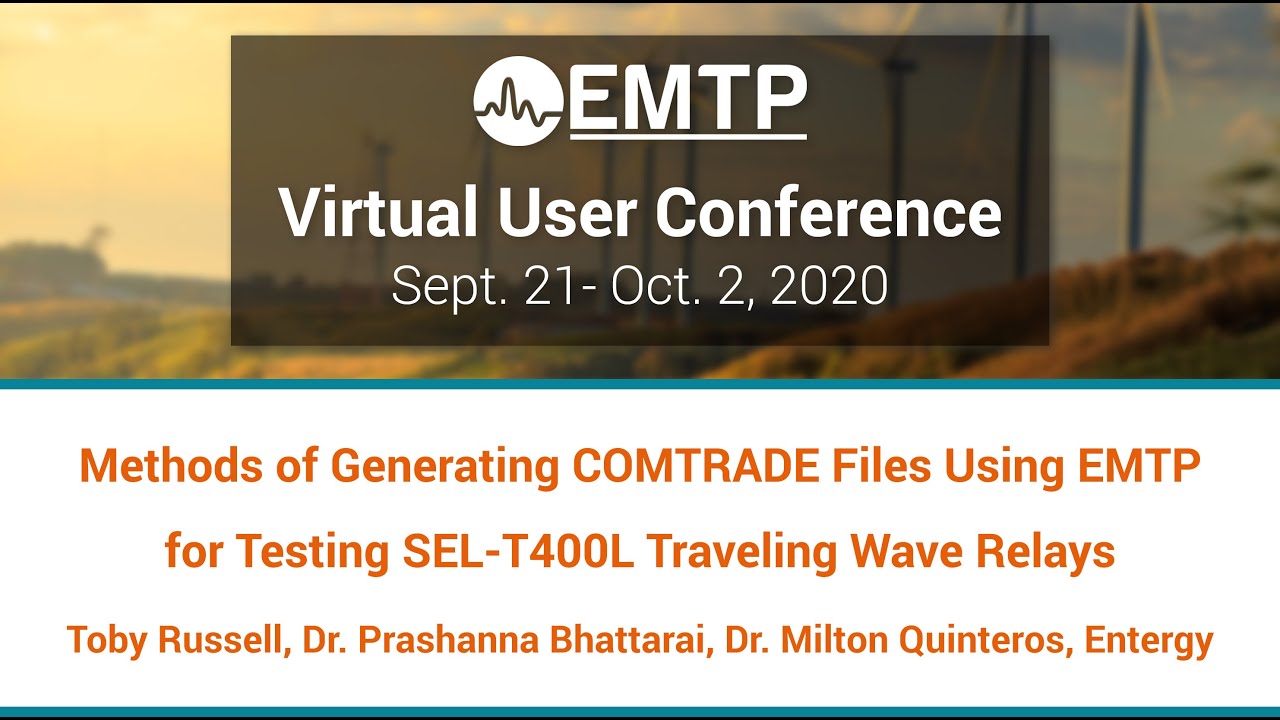
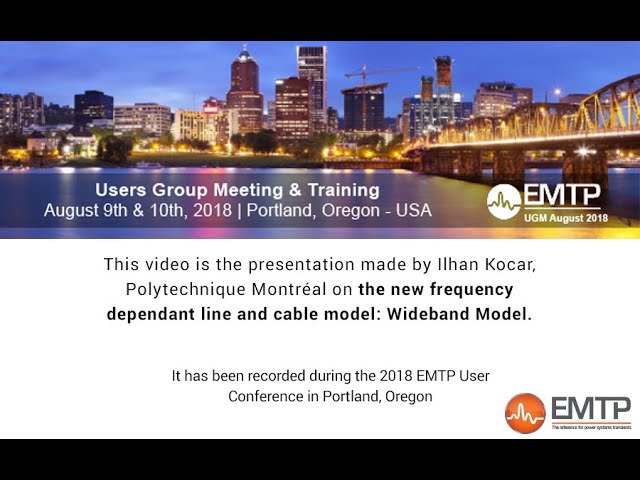
![[R&D]_EMTP : Recherche et développement [R&D]_EMTP : Recherche et développement](https://www.emtp.com/system/files/imagecache/presentation/slide1_1.jpg)
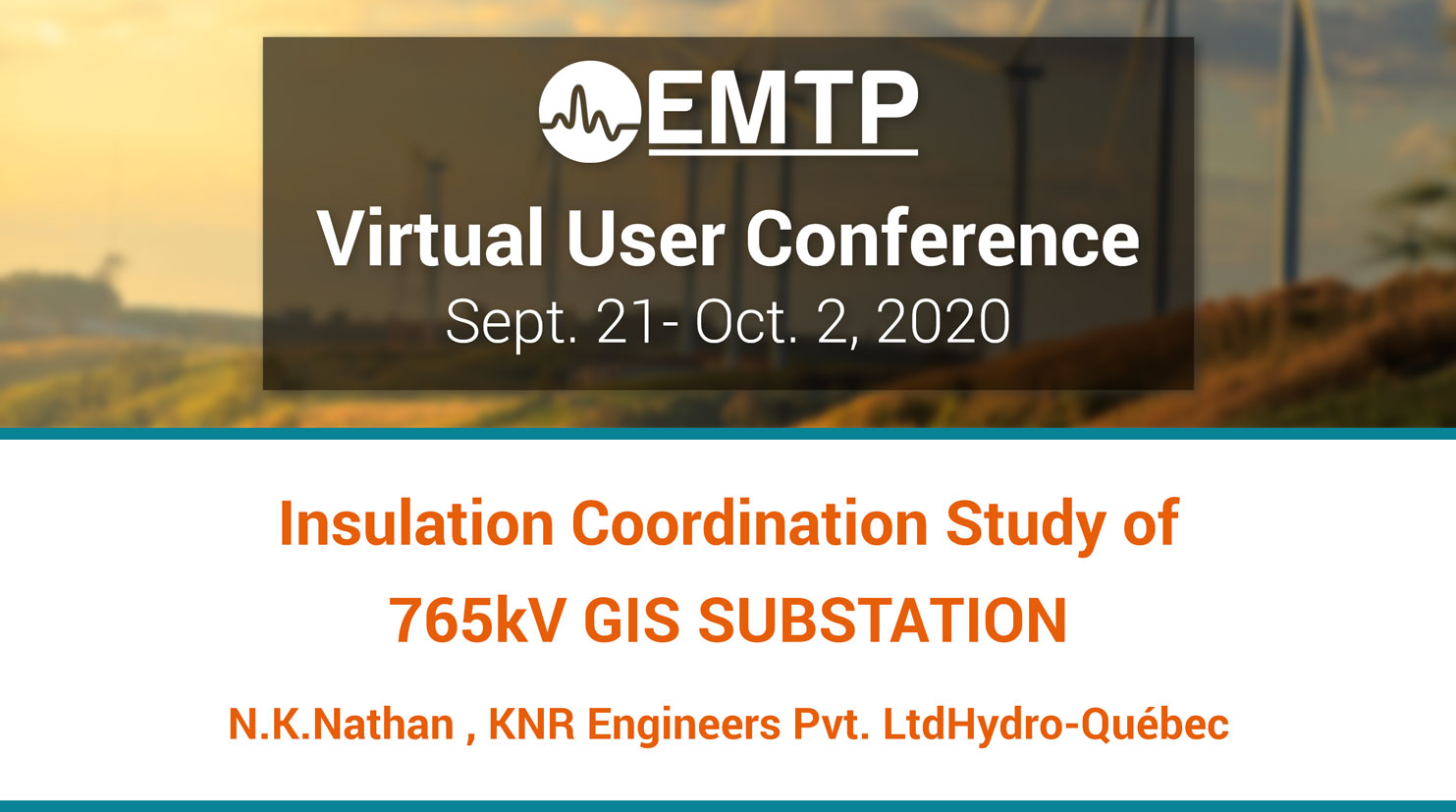
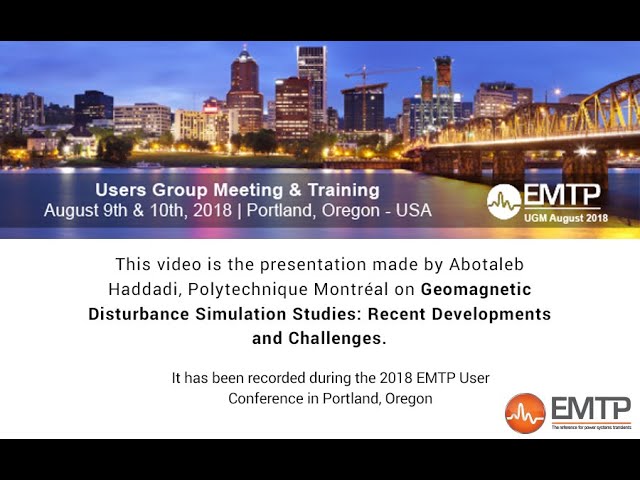

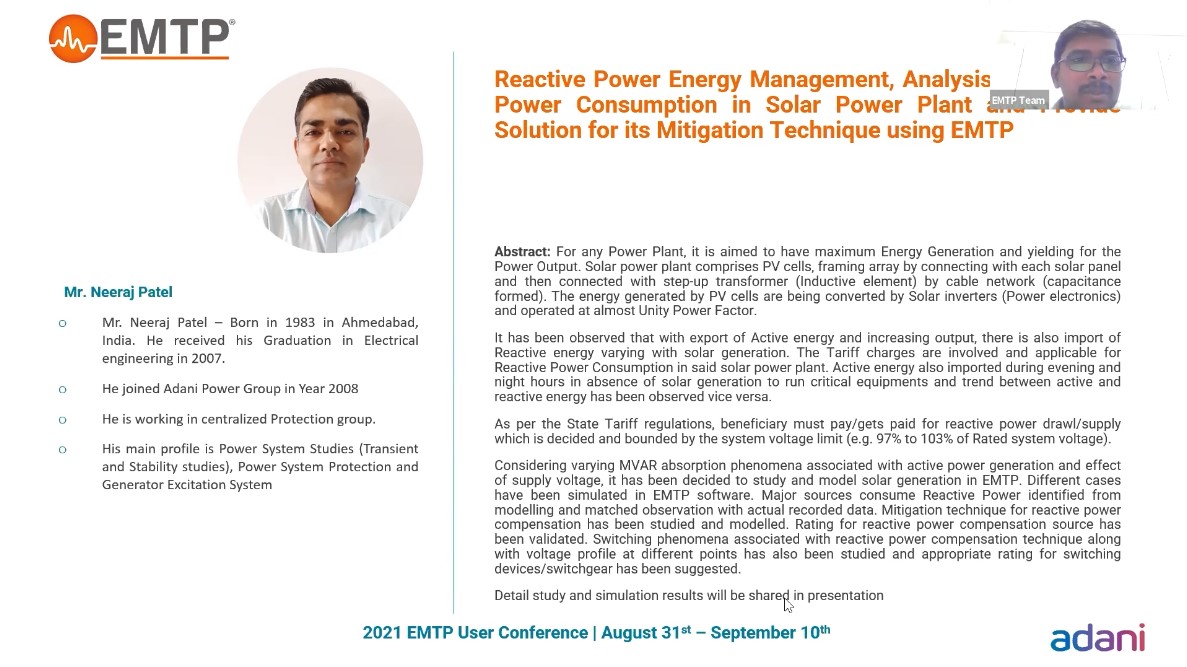
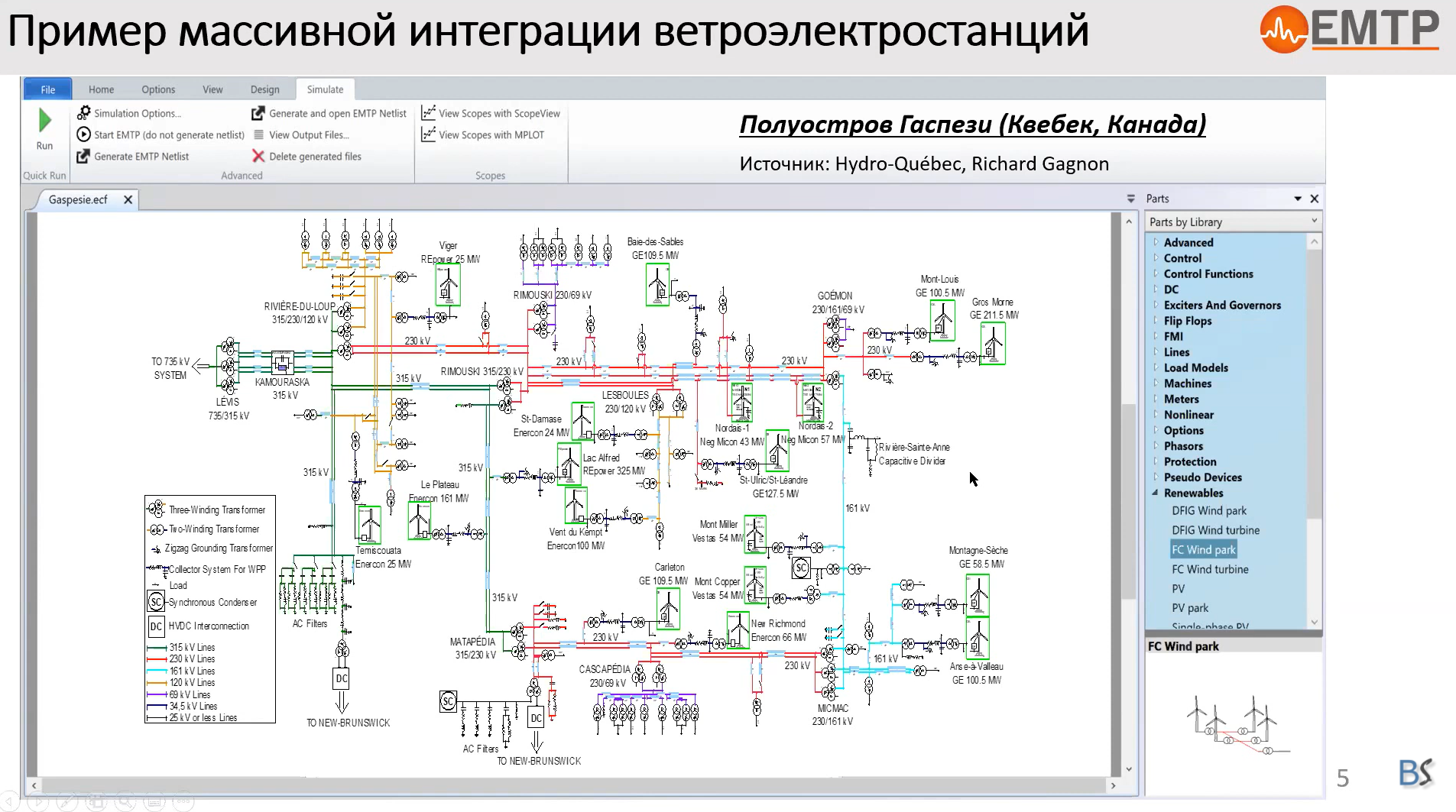
![[Protection_Devices]_Étude des courants coupés par les sectionneurs de changemen [Protection_Devices]_Étude des courants coupés par les sectionneurs de changemen](https://www.emtp.com/system/files/imagecache/presentation/TechnicalPresentation1.jpg)
